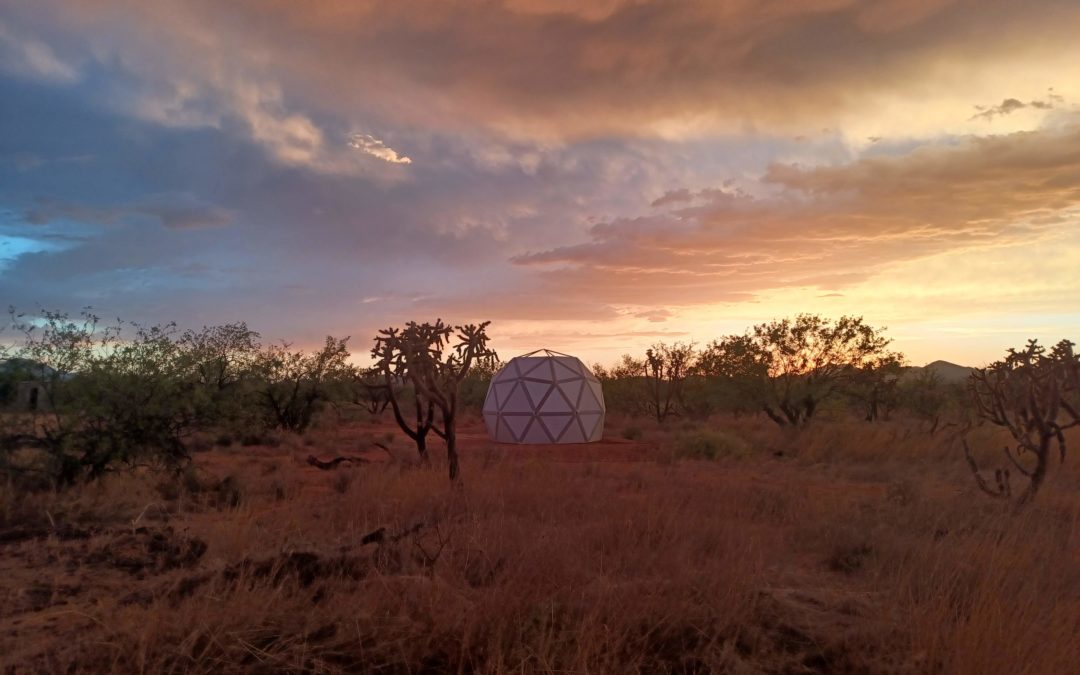Our land includes a large riparian zone, which is an officially (county) designated swath of land to be left untouched to act as corridors and sanctuaries for local wildlife. Along the outer edges of these corridors, we will develop our orchards. Tucked in and around our orchards will be our mini private living domes. These “dome-a-ciles” will be connected to other domes by meandering paths that all converge upon our common living space domes.
The dome structure is ideal because its shape is very stable by nature, and it requires a small amount of material, even compared to natural buildings. A dome built of all new materials can still use less new material than a fully finished natural home once the finishing touches such as roofing or cement for foundations are considered. Dome homes can be designed to create minimal waste and you can even incorporate reclaimed materials into the building, including the notoriously hard-to-recycle corrugated plastic. Foremost in our starter village is our comfy bath dome. This is the proof-of-concept dome that showed us a viable build and covers a methodology that we feel we can fine-tune into our standard indoor living space. Based on that experience, we believe we can produce a fully covered, waterproof, windproof, extremely durable dome with only two people working for four days. The next official domes going up will be our community’s maker space dome(s). These structures will house our dome-building equipment including a CNC machine and our dome press.
For our living space foundations, we have decided to build platforms with native soil. In a biome that experiences torrential monsoons, making dirt platforms would normally be a fool’s errand. But once again, we are leaning on technology to aid us. We plan to utilize a newly developed, environmentally friendly, natural enzyme to mix into our soil so we can achieve drastically improved compaction; and in essence, convert our soil platforms to caliche, a hardened natural cement.
On these foundations, we’ll secure our quick-build, super-strong, minimal-material, and movable mini domes. Keeping the size small reduces cost; and more importantly, these mini domes will be simple to heat and cool via local solar microgrids because the volume of air to heat or cool these spaces is actually less than traditionally shaped homes. We will avoid building large domes since such large enclosed spaces inevitably come with technical challenges of scale.

Instead, our larger gathering spaces will be outdoor spaces protected from wind and rain but not completely isolated from the outside. This we feel will keep us connected to nature while still having small, comfortable, and manageable spaces to create and play in.
For power, we rely on solar-powered microgrid stations. We are blessed with consistent sunshine which provides us ample power for our needs. Using local microgrids has the advantage of resilience. In the event of power issues in any microgrid, only that microgrid is affected and nearby grids can be used to temporarily cover any grid that is down. This also eliminates the need for thick, expensive, permanent power lines to distribute power across the land. We will use the same approach to water distribution. From the solar-powered well pump, we will distribute water via a low-pressure network of smaller pipes into water tanks distributed throughout the land. Each of these water tanks will independently provide pressurized water via solar-powered pressure pumps to the local area.

